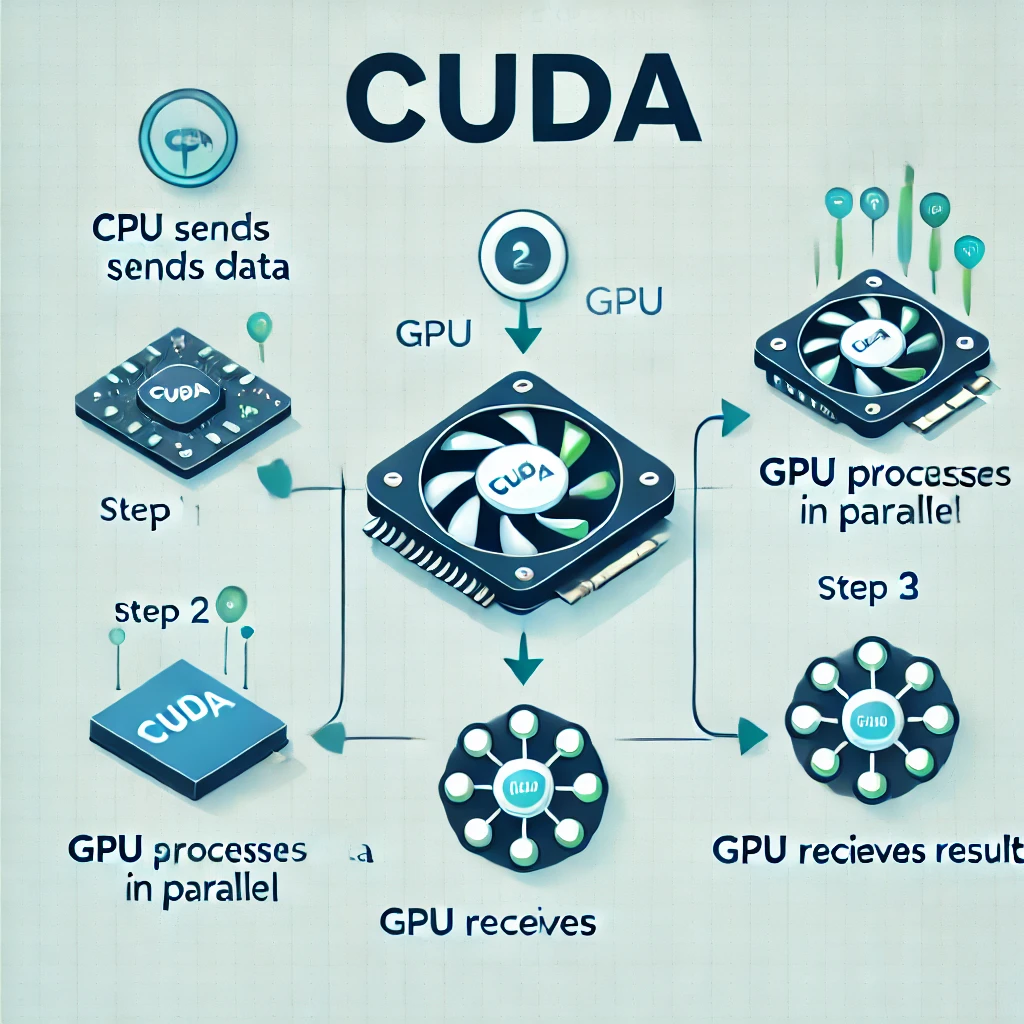What Is Cuda
A Simple Guide to NVIDIA’s Parallel Computing Platform
CUDA (Compute Unified Device Architecture) is a parallel computing platform and programming model developed by NVIDIA. In simple terms, it’s a technology that allows software developers to use NVIDIA graphics processing units (GPUs) for general purpose computing rather than just graphics processing.

CUDA Architecture Overview
CUDA enables parallel processing across thousands of GPU cores, dramatically accelerating computational tasks.
Understanding CUDA in Simple Terms
Imagine you have a complex math problem with thousands of similar calculations. You could:
- Use a CPU (Central Processing Unit): Like having one very smart person solve each calculation one after another
- Use a GPU with CUDA: Like having hundreds of people working on different calculations simultaneously
CUDA provides the tools and instructions that let programmers harness this massive parallel processing power.
How CUDA Works
CUDA works by allowing programmers to write code that runs on both the CPU and GPU:
- The CPU (Host) handles the main program flow, data management, and sequential tasks
- The GPU (Device) handles parallel processing of data using thousands of small, efficient cores
When a program needs to perform calculations that can be done in parallel:
- Data is transferred from the CPU’s memory to the GPU’s memory
- The GPU executes specialized functions called “kernels” across many cores simultaneously
- Results are transferred back to the CPU’s memory
Why CUDA is Special
Massive Parallelism
Modern NVIDIA GPUs contain thousands of cores that can execute operations simultaneously, compared to a typical CPU with 4-32 cores.
Specialized Architecture
GPUs are designed specifically for parallel workloads, with hardware optimized for floating-point calculations and data throughput.
Comprehensive Ecosystem
CUDA includes libraries, debugging tools, compilers, and programming interfaces that make GPU computing accessible.
Real-World Applications
CUDA has revolutionized numerous fields:
- Scientific Research: Simulating complex systems like weather patterns, molecular dynamics, and fluid mechanics
- Artificial Intelligence: Training and running deep learning models
- Medical Imaging: Processing and analyzing 3D scans
- Financial Modeling: Running complex risk analysis and trading algorithms
- Computer Vision: Processing image and video data in real-time
- Cryptography: Accelerating encryption/decryption and cryptocurrency mining
CUDA vs. Other GPU Computing Platforms
While alternatives like OpenCL offer GPU computing across different hardware vendors, CUDA remains the most mature and optimized solution for NVIDIA GPUs, offering better performance and more comprehensive tools for developers.
Getting Started with CUDA
To use CUDA, you need:
- An NVIDIA GPU that supports CUDA (most models from the past decade)
- The CUDA Toolkit (free download from NVIDIA)
- A compatible operating system (Windows, Linux, or macOS)
Developers can then write code using CUDA C/C++, Python (via libraries like Numba or CuPy), or other supported languages.
The Future of CUDA
As computing demands continue to grow, CUDA’s importance is expanding beyond traditional GPU computing into areas like:
- Edge AI computing
- Autonomous vehicles
- Quantum computing simulation
- Advanced graphics and ray tracing
CUDA represents a fundamental shift in computing architecture, moving from purely sequential processing to massive parallelism, enabling breakthroughs in fields that were previously limited by computational power.